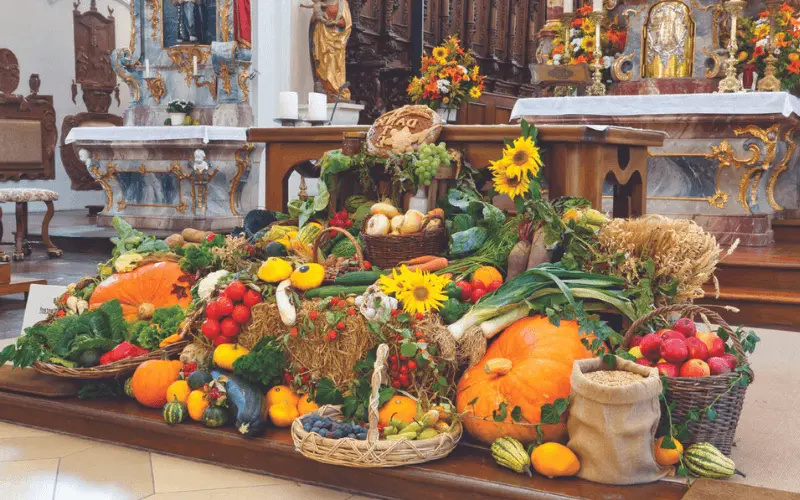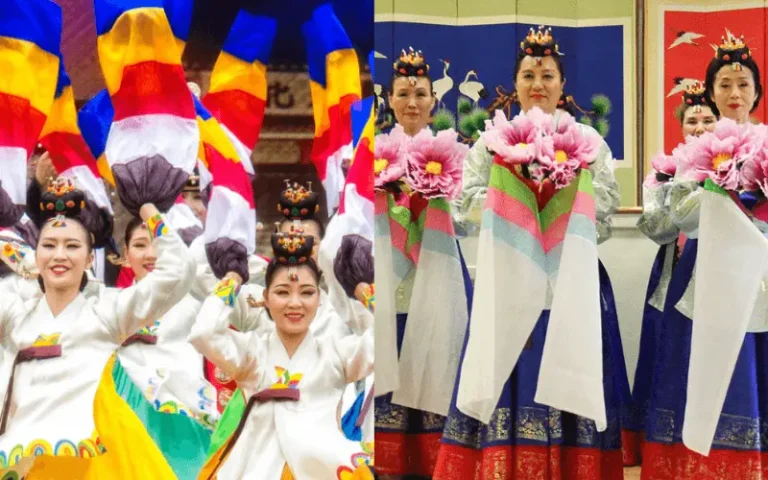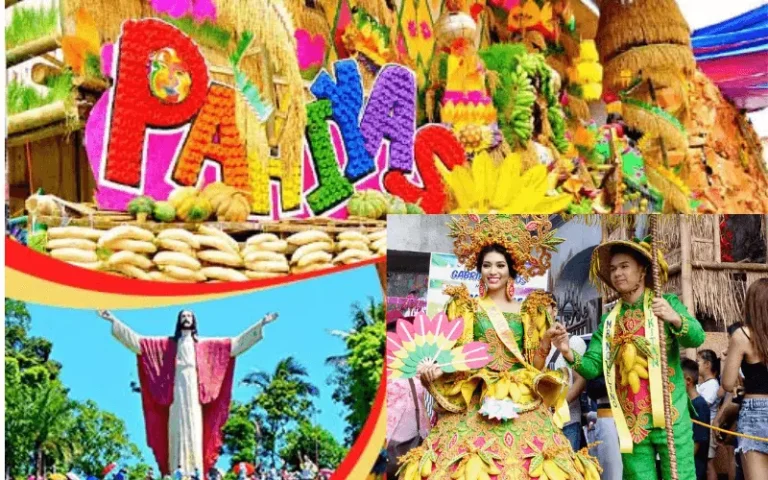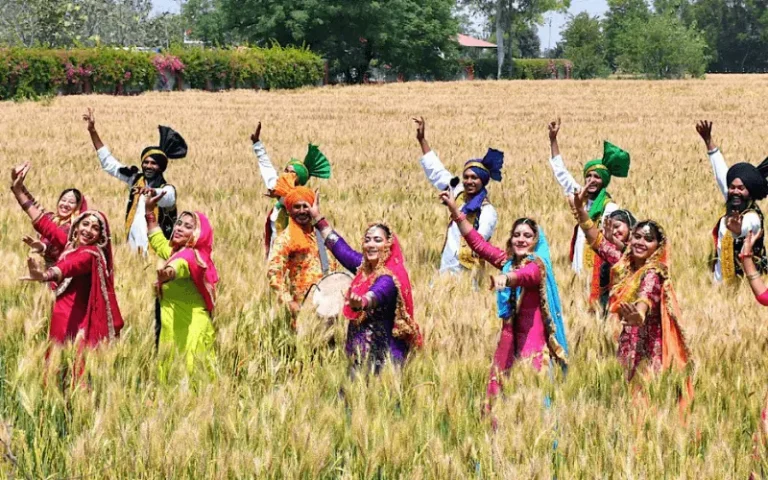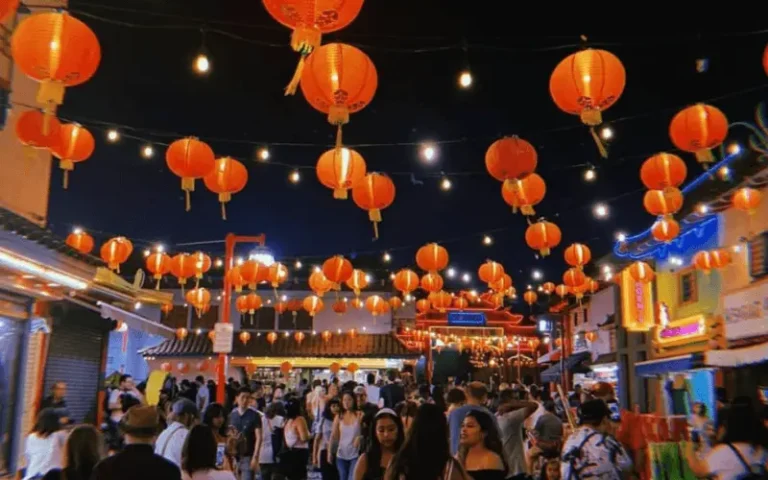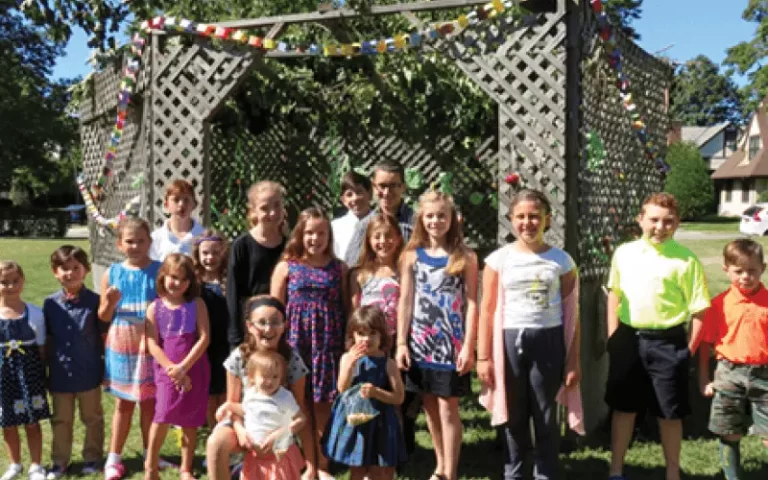Erntedankfest| Thanksgiving in Germany
Erntedankfest is an annual traditional celebration, known as the harvest thanksgiving festival or Erntedank in German, which echoes a timeless tradition in Germany that celebrates the abundance of the harvest season. This festival held annually in Düsseldorf-Urdenbach this festival draws thousands of visitors, all united in expressing profound gratitude to God for the bounty of the harvest.
For 90 years, Erntedankfest has been celebrated across different areas with vibrant parades, beautiful displays featuring local produce, and lively music and dance. It’s a wonderful display of German culture, quite different from North American Thanksgiving traditions. Eager to explore this unique harvest celebration? Then read this article to learn all about this festival.
Stay tuned.
History of German Thanksgiving
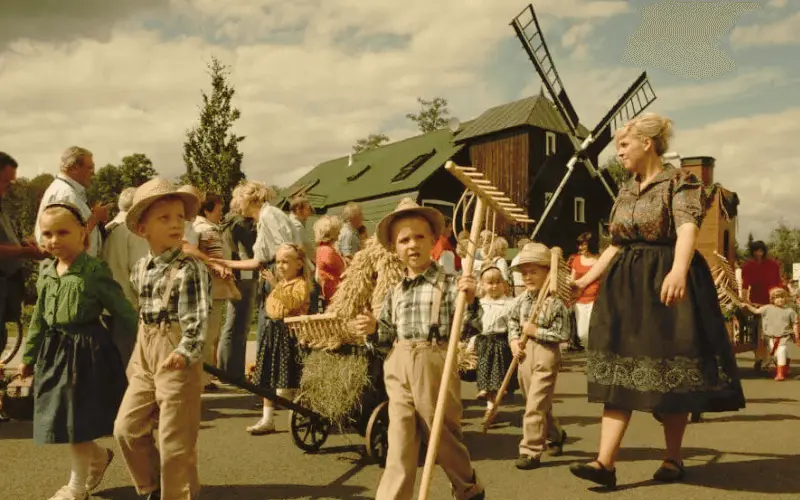
The Erntedankfest, also known as the Harvest Festival, is a traditional celebration in Germany dating back to ancient Christian times. It’s a special event to say thanks for the good harvest. Initially, it began as a religious ceremony with church services, processions, and big meals to appreciate the crops. As years passed, it became more of a fun community festival with music, parades, pretty floats, and displays of local fruits and veggies. This fest happens around late September or early October when the harvest season is in full swing in Germany.
Why do Germans celebrate Erntedank?
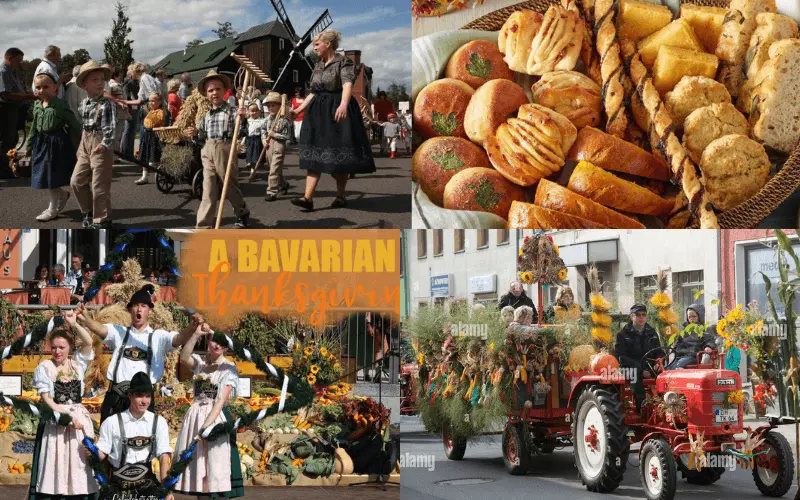
Germans celebrate Erntedank as a way to honor and give thanks for the harvest season, rooted in Christian beliefs. They attribute the bountiful harvest to God’s provision, recognizing that everything, including favorable weather conditions crucial for a good harvest, comes from a higher power. The festival signifies gratitude for the abundance of crops and acknowledges God’s role in ensuring a successful harvest, a belief deeply ingrained in Christian traditions.
When Is Erntedankfest Celebrated?
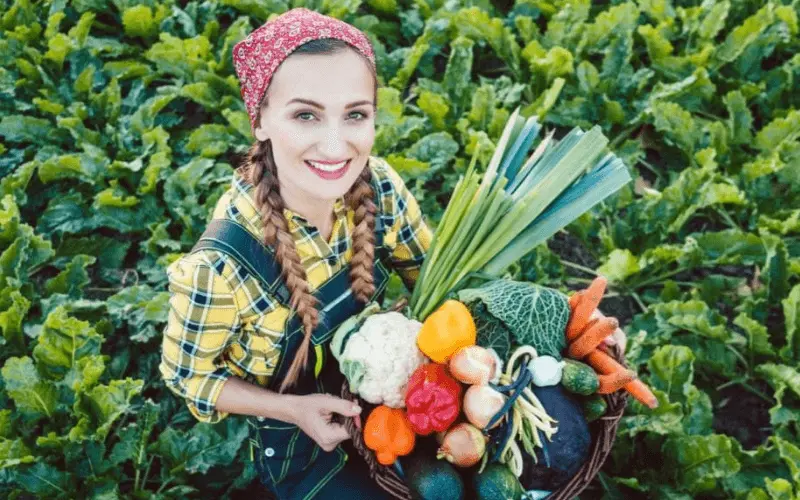
Erntedankfest is celebrated on the first Sunday after September 29, known as Michaelmas in English. This tradition dates back to Thanksgiving Day in 1972. The Erntedankfest parade happens on this specific Sunday, while the celebration extends from Friday to Monday. Each year, the sequence of events and their schedule remains nearly consistent, making it a cherished annual occurrence. The table below shows the Erntedankfest 2024, 2025, 2026,2027 dates
| Year | Date |
|---|---|
| 2024 | Sun, Oct 6, 2024 |
| 2025 | Sun, 5 Oct, 2025 |
| 2026 | Sun, 4 Oct, 2026 |
| 2027 | Sun, 3 Oct, 2027 |
What traditional German Thanksgiving foods are typically eaten during Erntedankfest?
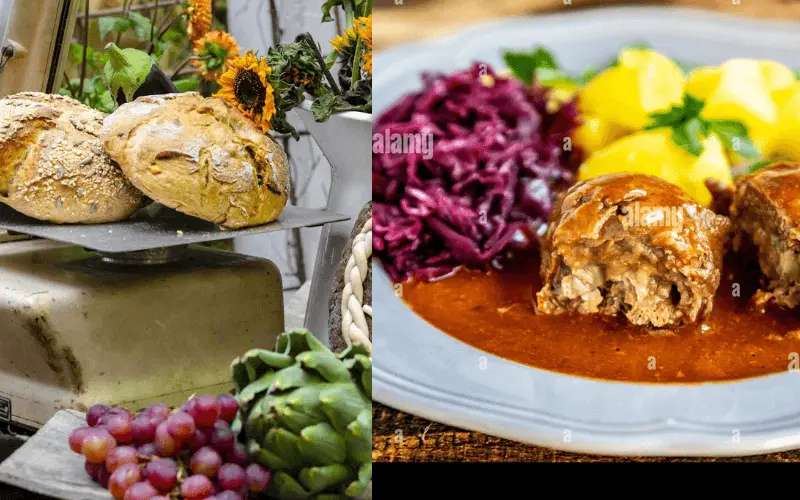
German foods during Erntedankfest, Germans enjoy dishes like a roulade, red cabbage, and potato dumplings covered in tasty roulade gravy. They also celebrate with freshly harvested foods like wheat and honeycomb and a specially decorated loaf of bread. These traditional Erntedankfest foods make up the heart of the celebration. It’s a time for a big Danke fest (Thanksgiving feast), where everyone gives thanks together.
How Germans Celebrate Erntedankfest?
The celebration of the Erntedankfest is done by doing the following things in Germany:
1. Solemn Church Service
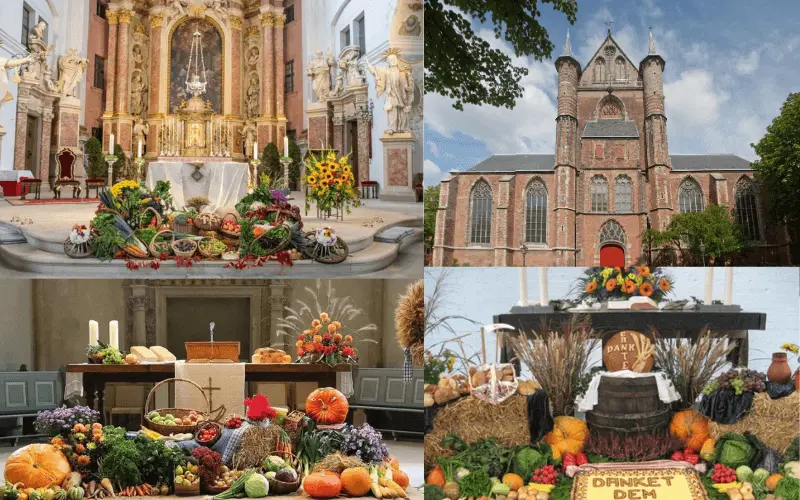
The Erntedankfest begins with a solemn church service where the community gathers to offer prayers of thanks, emphasizing gratitude through sermons and songs, acknowledging the season’s bounty. This service marks the start of the celebration.
2. Harvest Crown (Erntekrone)
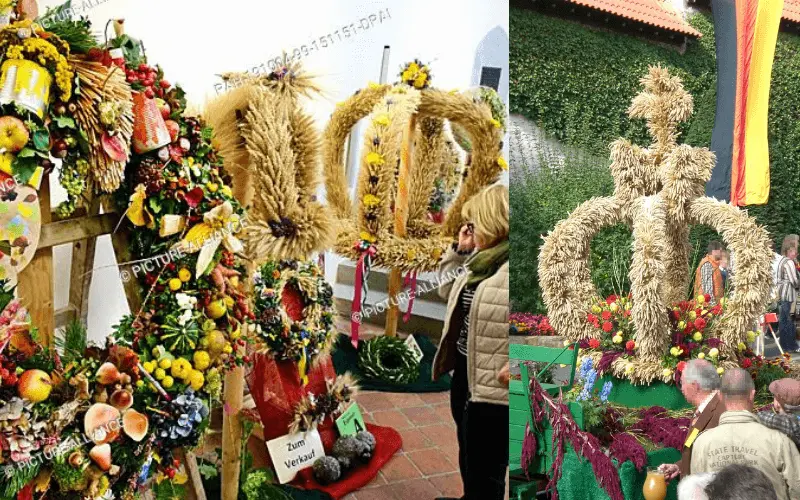
The highlight of the Thanksgiving procession is the presentation of the Harvest Crown (Erntekrone). This adorned crown, embellished with harvested produce, is a significant symbol of abundance and gratitude. It’s ceremoniously offered to the Harvest Queen, signifying the community’s appreciation for the bountiful harvest.
3. Harvest Queen (Erntekönigin)

The most cherished Erntedankfest tradition involves crowning the Harvest Queen (Erntekönigin). She is chosen to represent the community’s gratitude and the essence of the harvest festival. Her role is pivotal, symbolizing the harvest’s prosperity and unity among people.
4. lantern and torch parade

The lantern and torch parade, known as “Laternenumzug” in German, is a delightful event for children during the Erntedankfest celebration. Kids carry lanterns and torches, creating a charming procession that illuminates the evening. Occasionally, the festivities culminate with captivating fireworks, adding a touch of magic to the night’s celebrations.
5. Bread Loaf and Baskets Decoration
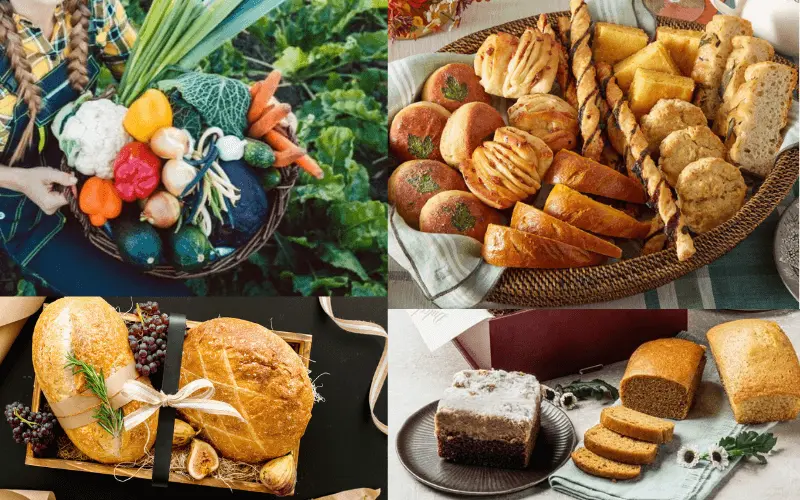
Throughout the festivities, a special focus is on decorating bread loaves and baskets with freshly harvested produce.
The celebration revolves around uniting the community in a joyous expression of thankfulness for nature’s bounty. Now let’s talk about whether American Thanksgiving and Erntedankfest are the same.
Is Erntedankfest The Same As The American Thanksgiving?
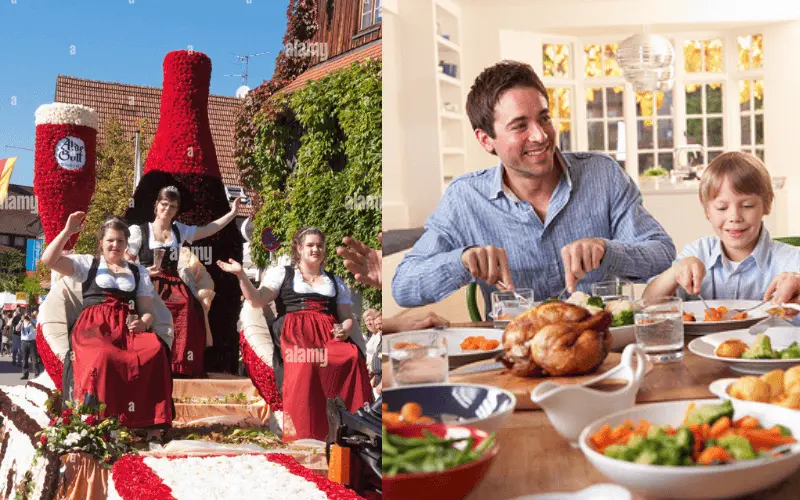
Yes, Erntedankfest isn’t the same as the American Thanksgiving, but it shares similarities as a common factor in both harvest festivals expressing gratitude for the harvest season’s abundance but they differ in cultural and historical contexts.
Erntedankfest is a German celebration that’s religious in origin, marked by church services and community festivities, focusing on giving thanks for the harvest.
On the other hand, American Thanksgiving has historical ties to the Pilgrims and Native Americans, celebrated as a national holiday with specific customs like turkey dinners and family gatherings. Both emphasize gratitude for the harvest, but they are distinct in their traditions and cultural significance.
How to say Happy Thanksgiving in Germany?

In Germany, to express “Happy Thanksgiving” during the Erntedankfest, you’d say “Frohes Erntedankfest!” which translates to “Happy Harvest Festival!”
Harvest Friendship Pilgrims & Wampanoag Bond and the First Thanksgiving
Back in 1621, there was this special day called the “First Thanksgiving.” Imagine a bunch of travelers, the Pilgrims, and the Wampanoag tribe, their new friends, coming together for a big celebration. See, the Pilgrims had just harvested their crops successfully for the first time, and they wanted to say a big “thank you” to the Wampanoag for helping them out.
This wasn’t just any party—it was a mix of the Pilgrims’ customs from England and the Wampanoag traditions. They feasted, played games, and prayed together. It was like a big festival celebrating the harvest, just like how people did it in England.
What made it super special was how Squanto, a Native American from the Wampanoag tribe, taught the Pilgrims how to grow crops in this new land. His help was super important for the Pilgrims to survive. This get-together was not just about having fun but also about saying “thank you” and showing appreciation to their new friends.
This celebration wasn’t just a party; it was a way to lift everyone’s spirits, especially after some tough times. It was a chance for the Pilgrims to show how much they valued their friendship with the Wampanoag and how grateful they were for their help.
Read other Harvest Festival Guides by daydiscuss.com.
Conclusion
Erntedankfest, or Harvest Festival, symbolizes German gratitude for the bountiful harvest with church services, parades, and the offering of a Harvest Crown to the Harvest Queen. It’s a celebration that unites communities, expressing thankfulness for agricultural abundance, and fostering a sense of togetherness.
Frequently Asked Questions
Do Germans celebrate Thanksgiving?
In Germany, they do celebrate their version of Thanksgiving, known as Erntedankfest, which coincides with the same date as Canada’s Thanksgiving. Erntedankfest is a traditional harvest festival observed with gratitude for the harvest and blessings received. While similar to the North American Thanksgiving, Erntedankfest holds its unique cultural traditions and customs within German communities.
Does Europe celebrate Thanksgiving?
Yes, in parts of Europe, there is a celebration similar to American Thanksgiving called Erntedankfest. This observance is embraced by rural communities in countries like Germany, Austria, and Switzerland. Erntedankfest shares the essence of giving thanks for the harvest and blessings received, akin to the spirit of American Thanksgiving, albeit with unique cultural customs and practices within these European regions.
Who is the Germanic harvest god?
The Germanic harvest god is Freyr. In Norse mythology, Freyr is revered as the deity associated with fertility, prosperity, and agriculture. He is often recognized as a significant figure related to the bountiful harvest and the abundance of nature during the harvest season.
What do the North American tradition of Thanksgiving and the German celebration of Erntedank have in common?
Both the North American tradition of Thanksgiving and the German celebration of Erntedank share a profound sense of gratitude. They both serve as reminders of the significance of agriculture, recognizing and appreciating the abundance provided by the land in the form of nourishing foods and beverages. Both holidays embody the spirit of thankfulness for the blessings received throughout the year.

